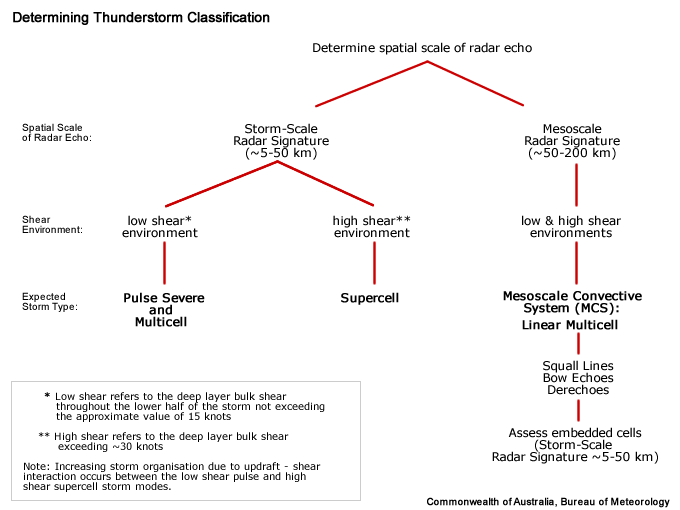Conceptual Model
A Forward Flank Notch (FFN) signature is used as one of many signatures providing additional evidence for a severe thunderstorm (see Lemon 1976). The presence of a FFN signature indicates that a thunderstorm possesses a strong and persistent updraft. In fact, the FFN signature is usually associated with supercells. This signature is most commonly found at midlevels, as storm updrafts in an environment of steep midlevel lapse rates and storm–relative flows can both be strong at this elevation, and plenty of hydrometeors exist there to delineate the flow field. The physical mechanisms that create a FFN signature are still under investigation. Proposed candidates include a dynamically created downshear low in a situation where strong storm–relative flow interacts with a strong and persistent updraft, Bernoulli acceleration on the flanks of a storm with a strong updraft, or a wake eddy effect. Controversy exists surrounding the more intuitive explanation that a strong updraft simply "blocks" the ambient flow.
Determining Thunderstorm Classification
Forward Flank Notches are predominantly associated with supercells. To help determine the classification of a thunderstorm you are observing, use the following flow chart to help diagnose which thunderstorm conceptual model you should consider more closely.

See Supercell for more information.
